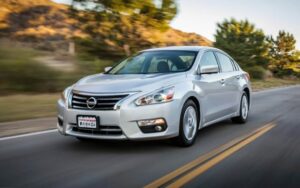Are you unsure about the optimal tire pressure for your mountain bike? Don’t worry! This article will guide you through the factors that affect tire pressure and provide you with the recommended range.
Knowing how to adjust your tire pressure based on trail conditions is crucial for an optimal ride.
Maintaining proper tire pressure is essential for performance and safety.
Follow our expert tips to ensure you’re getting the most out of your mountain bike tires.
Key Takeaways
- Factors such as rider weight, terrain, tire width, and riding style affect the optimal tire pressure for mountain bike tires.
- Experimentation is important to find the right tire pressure range for different trail conditions.
- Lower tire pressure provides better traction and control on rough and rocky trails, while higher pressure reduces rolling resistance on smoother and hard-packed trails.
- Maintaining the recommended tire pressure ensures maximum performance, comfort, and safety, as well as protects the rims from damage.
Factors Affecting Tire Pressure
When determining the optimal tire pressure for your mountain bike, several factors come into play.
The first factor to consider is your weight. Heavier riders generally require higher tire pressure to prevent pinch flats and maintain stability.
The type of terrain you ride on is another important factor. For smooth surfaces, lower tire pressure can provide better traction and a smoother ride. On rough and rocky trails, higher tire pressure helps prevent punctures and improves control.
Additionally, the width of your tires affects the recommended pressure. Wider tires require lower pressure for increased grip and comfort.
Lastly, your riding style influences tire pressure. Aggressive riders may prefer higher pressure for more responsiveness, while casual riders may opt for lower pressure to enhance comfort.
Considering these factors will help you determine the optimal tire pressure for your mountain bike, which we’ll discuss in the subsequent section about the recommended tire pressure range.
Recommended Tire Pressure Range
To determine the recommended tire pressure range for your mountain bike, consider the following factors.
First, the type of terrain you’ll be riding on plays a crucial role. If you’re riding on rough or rocky trails, a higher tire pressure will help prevent pinch flats and provide better stability. On the other hand, if you’re riding on smooth terrain, a lower tire pressure can improve traction and provide a more comfortable ride.
Another factor to consider is your weight. Heavier riders may need to increase the tire pressure to avoid bottoming out and ensure optimal performance.
Additionally, the width of your tires also affects the recommended tire pressure range. Wider tires generally require lower pressure, while narrower tires need higher pressure for optimal performance.
It’s important to experiment and find the right tire pressure that suits your riding style and preferences.
Adjusting Tire Pressure for Trail Conditions
Adjust the tire pressure of your mountain bike according to the trail conditions. The right tire pressure can greatly improve your performance and overall ride experience.
For rough and rocky trails, it’s recommended to decrease the tire pressure. Lower pressure allows the tires to grip the terrain better, providing better traction and control. This helps to absorb the bumps and maintain stability.
On the other hand, for smoother and hard-packed trails, increasing the tire pressure is advised. Higher pressure reduces rolling resistance, allowing you to pedal more efficiently. It also helps prevent pinch flats and sidewall damage.
By adjusting the tire pressure to match the trail conditions, you can optimize your ride and make the most out of your mountain biking experience.
Proper tire pressure is crucial for achieving optimal performance, comfort, and safety on the trails.
The Importance of Proper Tire Pressure
Proper tire pressure is essential for maximizing your performance, comfort, and safety on the trails, as it directly affects your mountain biking experience. Here are three reasons why maintaining the correct tire pressure is crucial:
- Traction: The right tire pressure allows your mountain bike to grip the terrain effectively. Too low of a pressure can cause your tires to squirm and slide, compromising your control and stability. On the other hand, too high of a pressure reduces the tire’s contact patch with the ground, leading to less traction and a harsher ride.
- Rolling Resistance: Optimal tire pressure minimizes rolling resistance, enabling you to pedal efficiently and maintain higher speeds. When the pressure is too low, your tires will feel sluggish, making it harder to accelerate and maintain momentum.
- Rim Protection: Maintaining the recommended tire pressure safeguards your rims from damage. If the pressure is too low, your tires are more susceptible to impacts and pinch flats. Conversely, excessive pressure increases the risk of rim damage when encountering rough terrain.
Understanding the importance of proper tire pressure sets the foundation for an enjoyable and safe mountain biking experience. Now, let’s move on to the next section, where we’ll explore tips for maintaining optimal tire pressure.
Tips for Maintaining Optimal Tire Pressure
Maintaining the correct tire pressure is key to ensuring optimal performance, comfort, and safety on the trails. Here are some practical tips to help you achieve just that.
- First and foremost, invest in a reliable tire pressure gauge. This will enable you to accurately measure the tire pressure and make any necessary adjustments.
- It’s recommended to check your tire pressure before every ride, as tire pressure can fluctuate over time.
- Be mindful of the specific tire pressure guidelines provided by the manufacturer of your mountain bike tires. Different bikes and terrains may require different tire pressures for optimal performance.
- Consider the impact of external factors such as weather conditions and temperature on tire pressure. Cold weather can cause tire pressure to decrease, so make sure to adjust accordingly.
Frequently Asked Questions
Can I Use the Same Tire Pressure for Different Trail Conditions?
Yes, you can adjust your tire pressure for different trail conditions. Lower psi provides more traction on rough terrain, while higher psi increases speed on smooth surfaces. Experiment to find what works best for you.
What Happens if I Overinflate My Mountain Bike Tires?
Overinflating your mountain bike tires can lead to a harsh and uncomfortable ride, decreased traction, and a higher risk of punctures. It’s important to find the right tire pressure for optimal performance and safety.
How Often Should I Check and Adjust My Tire Pressure?
You should check and adjust your tire pressure regularly to ensure optimal performance and safety. Neglecting this can lead to poor handling, increased rolling resistance, and potential damage to your bike.
Can I Use a Different Tire Pressure Range for Different Types of Terrain?
You can use a different tire pressure range for different types of terrain. Adjusting your tire pressure can help improve traction and control on various surfaces like rocky trails or soft soil.
Are There Any Risks Associated With Running Lower Tire Pressure on My Mountain Bike?
Running lower tire pressure on your mountain bike can increase traction and absorb shock, but it may also increase the risk of pinch flats and rim damage. Be mindful of the terrain and adjust accordingly.
Conclusion
In conclusion, maintaining the appropriate tire pressure for your mountain bike is crucial for optimal performance and safety.
Factors such as trail conditions, rider weight, and tire width should all be considered when determining the ideal psi range.
By regularly adjusting and monitoring tire pressure, riders can ensure better traction, control, and overall enjoyment during their mountain biking adventures.
Remember to consult your bike’s manufacturer guidelines and experiment with different pressures to find what works best for you.




